Welcome to a Story Series: Annapurna Part 4. Over the last few months, I have been learning about story craft from ScriptStuff. Mike is an award-winning scriptwriter who tailored the sessions towards a travel blog to teach me the basics of storytelling. I decided to rewrite my Annapurna Circuit Trek Journals using my new skills in a 7-part series posted on the Bookshelf. The original Annapurna Circuit post was an ultimate guide to the Annapurna Circuit Trek. Then I expanded into three more detailed entries about my experiences (Annapurna Circuit, Thorong La Pass and Poon Hill). This Story will cover the Manang, Annapurna Circuit acclimatisation and trek up to Yak Kharka.
Part 4- Manang Acclimatisation and Yak Kharka

Chapter 1 – Manang Teahouse
Manang is a popular stopping point for trekkers along the Annapurna Circuit. It is the largest town in the valley, sitting at over 3500m. So, it’s the ideal place to acclimatise before heading to higher altitudes. Manang has cafes for relaxation and shops for last-minute supplies or even souvenirs. We had a full day here before the 2-day trek up towards Thorong Phedi. Our last stop before tackling the extreme altitude at Thorong La Pass.
Before we could unwind in Manang, we needed somewhere to set up a base camp. I was starting to worry about where exactly I would be sleeping. With the best teahouses fully booked and more trekking groups arriving by the minute, our options were running low. As Dawa and I walked through the main street, we asked several other teahouses without any luck to get rooms for 2 nights. As we headed back to the entrance, we saw Sophie, Marleen and AJ arrive. We chatted about the day’s hike before Dawa explained just how busy the teahouses were with many large trekking groups in town. Unprompted, AJ said he had a spare reservation at a Hotel Manang due to a cancellation.
Dawa was very thankful, and we checked into the massive teahouse before the opportunity slipped away. We would be sharing a twin room for the first time, but having stayed in many hostels, I wasn’t worried. The afternoon was spent around the colourful town, seeing the Buddhist Chorten, prayer walls and cafes. The streets were crowded with people and livestock, a strange contrast to the peaceful hiking trails. I popped into some shops to see the souvenirs, but I was conscious that any purchases would add weight! My backpack was still heavy enough without trying to squeeze anything else before the hardest days ahead.
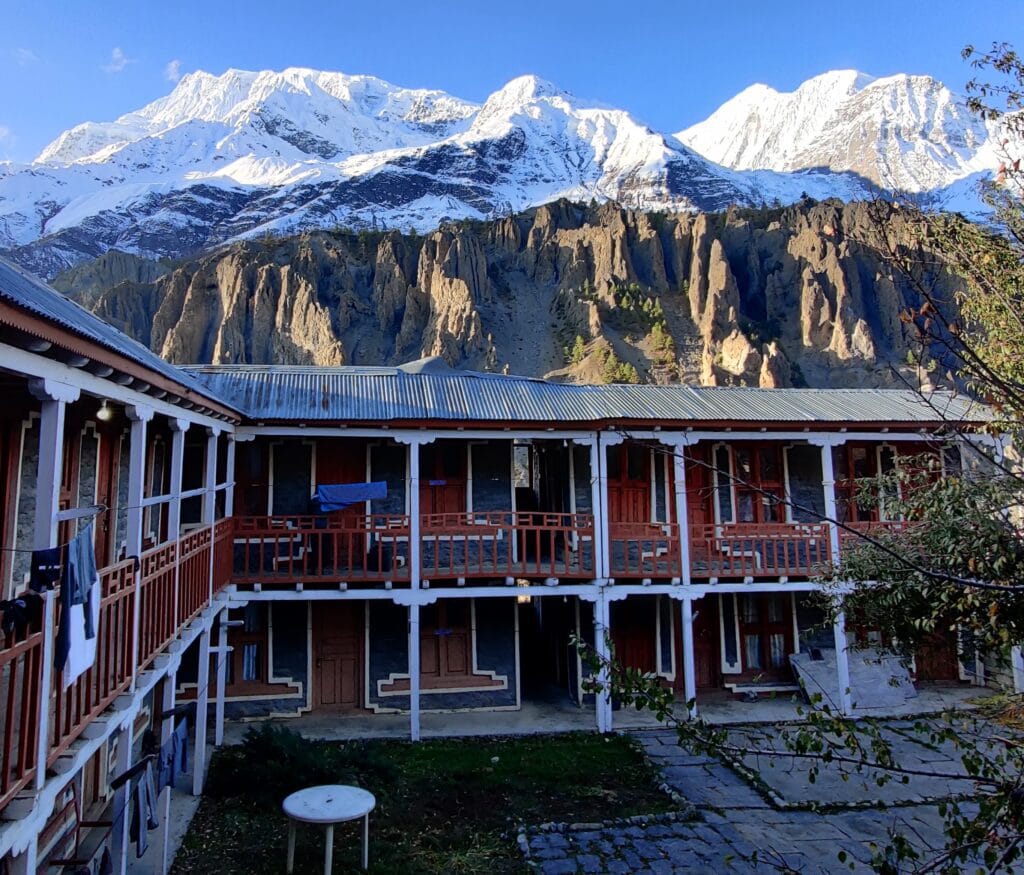
Chapter 2- Manang Acclimatisation Hike
The rest day was surprisingly needed after 4 long, hard days on the Circuit. It’s not normal to carry heavy packs for miles each day up steep terrain, so naturally, my body was aching. Overall, I was feeling happy with my fitness and thought I was acclimatising well. My dream was to hike up to Ice Lake at 4600m to see the incredible reflection of the Annapurna peaks on the still waters. I casually asked Dawa if we could go lightweight and leave early for the Ice Lake. He was quiet for a few moments as he considered his response. Dawa replied that it was too high and that I shouldn’t climb more than 500m a day at altitudes above 3500m… The Ice Lake was over a thousand metres higher than we stood. I was disheartened, but I knew any protests wouldn’t work. Dawa had an itinerary from his boss and wouldn’t risk my health. I enquired what we would do instead. The plan was to hike up to Chongkor Viewpoint, a more reasonable 350m climb. Disgruntled, I left to pack my collapsible backpack with the essentials, feeling a lack of excitement for the first time.
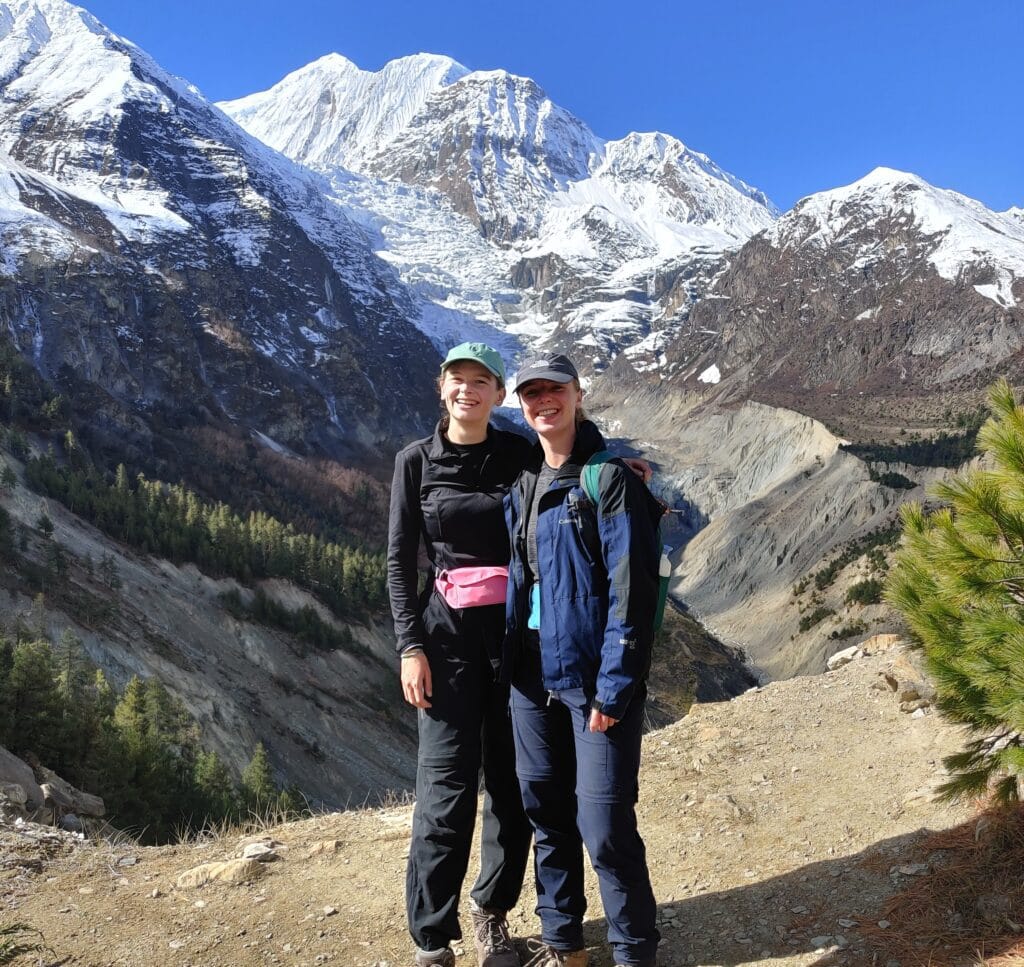
Chapter 3 – Chongshar Viewpoint
Dawa and I strolled through town as we headed towards the river. I was relieved that my body had a break from carrying the Atmos. Plus, I felt super light and agile when the terrain steeped carrying only my Collapsible Osprey Backpack. We walked along the ridge next to Gangapunra Lake, yet it was missing an important thing: water. So far, not the inspiring hike I had hoped for. The trail was very steep under the trees, which sheltered us from the sun. We had started early, which meant we had caught up with the Shack Keeper, heading up to open up for visitors later on. Dawa was happy to chat with the local man. Meanwhile, I heard other voices approaching fast from others on an acclimatisation hike. I looked behind and to my shock, it was Sophie and Marleen who popped out of the trees.
Immediately, I waited for my Dutch friends, and we hiked up the last part of the hike to the Chongshar Viewpoint. The views above Manang were stunning. Annapurna 2 and Gangapurna towered above us whilst the Chulus were across the valley. The viewpoint had prayer flags scattered across the low walls and hung from the trees. It might not have been the Ice Lake I had dreamed of, but it served the purpose of acclimatising with redeeming views. The girls and I swapped photography duties before relaxing next to the Shack with our guides. It had been better than expected at a much chiller pace than the main trekking days.
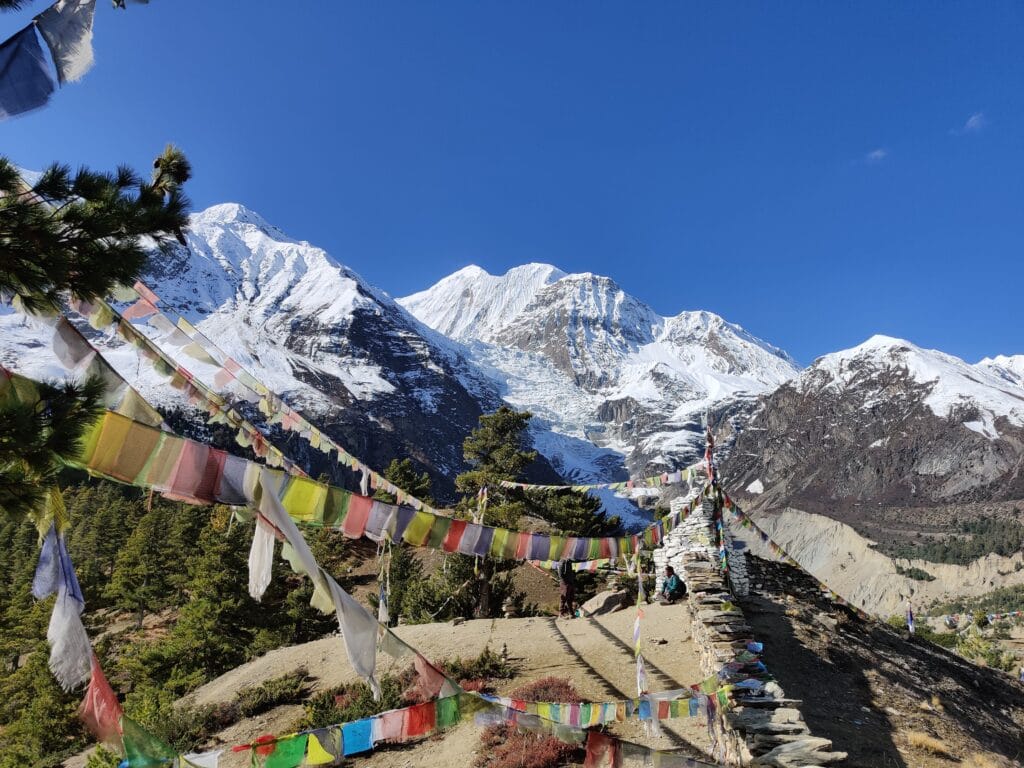
Chapter 4- Buddhist Monastery
Back in Manang, Annapurna Circuit, it was lunchtime and for once, I would not have Dal Bhat. My appetite wasn’t massive after an easy hike, so why not try something different? Instead, I ordered veggie Momos, a Nepalese dumpling, which were fried and packed full of flavour. The afternoon gave Dawa and me a chance to visit Bhojo Buddhist Monastery just outside the town. We arrived to find the Monastery closed for lunch, still and eerily quiet. Whilst we waited, we enjoyed apples from the orchard and took the views from the Stupa in the baking sun.
Finally, we were invited inside, where a dark yet colourful room awaited. Dawa translated what the Monk had to show us, such as Ancient books dating back over 1000 years and even a rare snow leopard’s skin. The interior decor was incredibly detailed with large murals covering the walls. It felt as though time had frozen inside, and there was a calming presence from the candlelight and flags. We made an offering at the shrine and lit a candle in the hope of safe passage over Thorong La Pass. I was happy to embrace the local customs, and it felt like a private opportunity that not many tourists would experience.
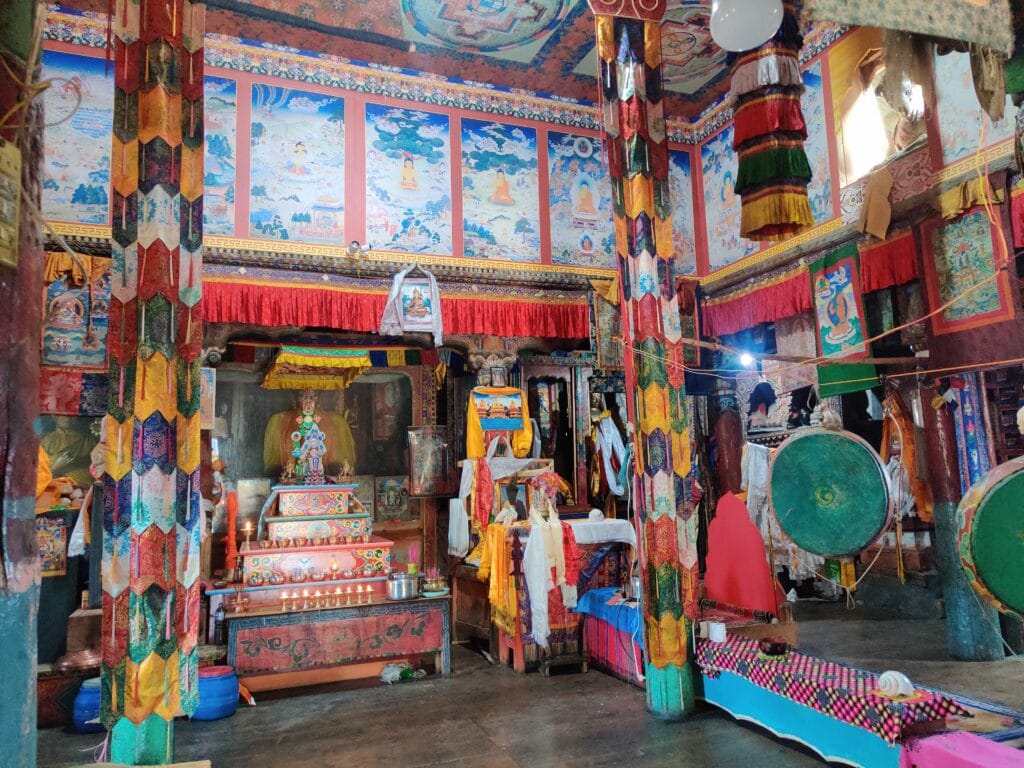
Chapter 5 – Ice Lake
I was strolling through the streets of Manang, Annapurna Circuit, in no particular direction. After absorbing the Buddhist calm, I was feeling relaxed about the next few days. I stepped out of a souvenir shop to see Karoline, Rents and Charlotte walk past. They caught sight of me asking how the day off had been. I mentioned visiting the ancient Monastery and the short hike whilst trying to contain the disappointment of not doing the Ice Lake. A smirk appeared on their faces as Rents explained how they had the freedom to do the challenging hike, as they had no guide. Whilst Karoline and Charlotte had made it above 4400m, only Rents had pushed onto the Ice Lake itself (Kicho Tal) at 4600m.
It had taken them all day to achieve this feat, and they were rewarded with a panoramic view across the valley at the Annapurna Massif. To say I was jealous was an understatement. We chatted about the days to come when 2 french speaking trekkers approached the girls. They introduced me to Xavier (French) and Jordan (Canadian), who had hiked to Ice Lake with them. In comparison, my low-intensity day around Manang didn’t impress Xavier or Jordan much as they rudely moved the conversation on. I congratulated the girls on their amazing climb and headed off back to the teahouse. Despite the feeling, I tried to stay upbeat by giving myself a reason to return or even attempt the trek extension to Tilicho Lake. However, I understood Dawa’s reasoning for not risking my acclimatisation with a significant altitude gain in a day. Nevertheless, I will always remember Manang, Annapurna Circuit as a missed opportunity.
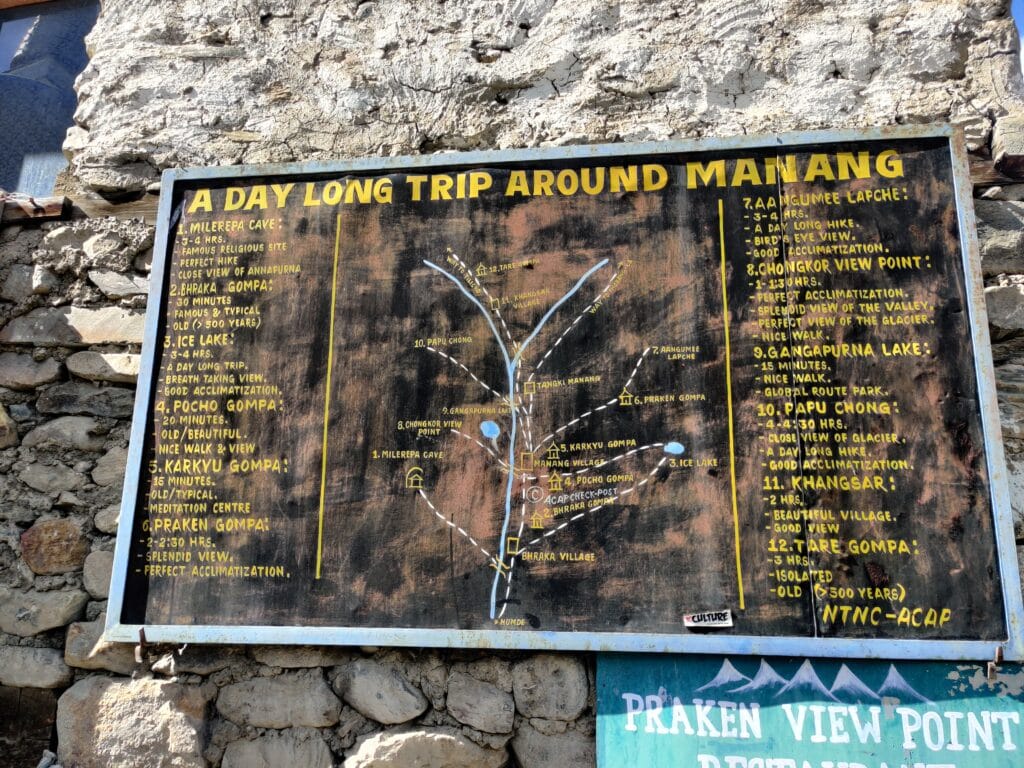
Chapter 6- Kiwi Friends
I was resting up in the dining hall, doing some journaling with the downtime. I even spent some time catching up on the outside world via patchy WiFi and letting family, friends and my girlfriend know my progress. And successfully passed on the jealousy by sending photos of the trek. The hall was filling up as it got closer to dinner, and I still had a large table to myself for now. It didn’t take long for a young New Zealand couple to ask if they could join. On my travels, I hadn’t met many Kiwis and took the chance to quiz them about the Southern Alps in NZ. Nick and Alex were on the same itinerary as me in Nepal, but were spending a year backpacking around the world. I was in awe of their travels and the confidence to visit such varied places in Europe, Asia and Africa.
We spoke for hours over Dal Bhat about cities, hiking and all their favourite places. It was an easy conversation, and I didn’t even get to talk about my love of rugby. Eventually, the topic changed to talk about the hot topic, altitude. We spoke about the dangers and whether we had noticed any effects so far. Alex said she was taking Diamox (medication) already since Upper Pisang and suggested it would be better to be preventative than reactive. I prepared by bringing the prescribed Diamox with me at least. Yet despite feeling strong and fit, was it better to be safe than sorry?
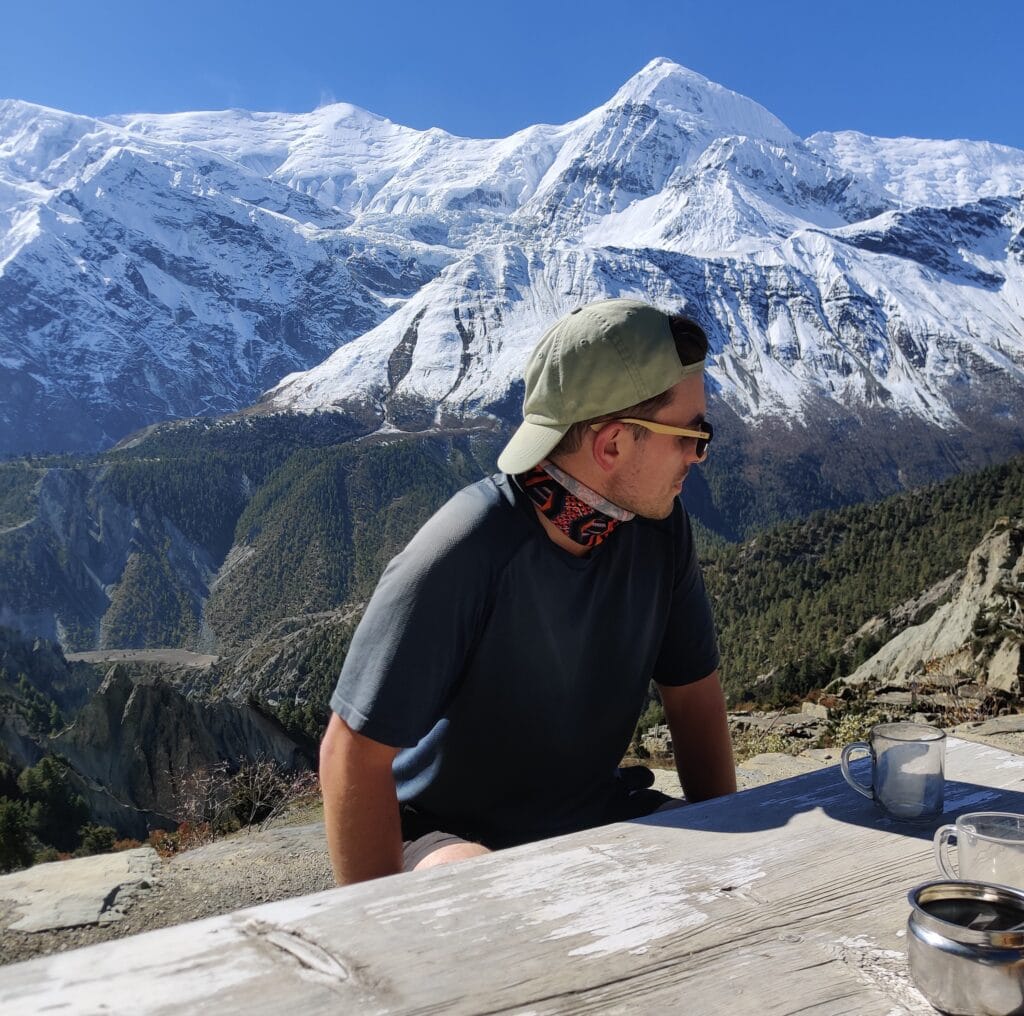
Chapter 7 – Teahouse Dining Hall
The woodburner warmed the packed dining hall as darkness fell. There were many large trekking groups with multiple guides compared to a handful of solo or couple trekkers. Dawa and several guides joined with two English ascents following. Harry and Amelia, whom I had met in Chame, were also staying at the Hotel! It was becoming a small world, and I felt almost popular as I introduced them to Nick and Alex. I was happy having met such a range of fellow trekkers after my initial worries in Kathmandu. Music started from another table, and the infectious Nepalese laughter rippled through the hall. Nick ordered a Ginger tea, which reduced any altitude-induced headaches. We got a round of tea for the table, as alcohol at this altitude was too dangerous. Not that the elder Italian group cared with multiple bottles being passed around.
We were curious about the real-life risks of altitude sickness, so we asked our guides. None of us wanted to turn back now that we were only a few days away from Thorong La. But we still had 2000m climbing to do in that time, so precautions would be needed. One of the guides whipped out a small pulse oximeter to check Nick and Alex’s blood oxygen levels. This then turned into a mini competition to see who had acclimatised best. Nick scored a 91 and Alex a 90 (above 85 is considered good). Next up, Amelia scored a 91, whereas Harry scored an 89. Last up, I clipped on the device and scored a 93, so I was pretty chuffed. We all were feeling much better after the ginger tea and some peace of mind from the half-scientific medical experiment.
Chapter 8 – Yak Kharka
It’s amazing what a single day without the backpack can do to your strength. I was feeling even fitter and in much better shape than the hungover Italians sat silently at breakfast. Once again, we were trekking and progressing towards our next teahouse. I decided it wouldn’t harm to take Diamox, so I asked Dawa, and he said Let’s see how today goes first. After a quick ACAP checkpoint, we started the slog up above Manang, Annapurna Circuit. The valley narrowed and split from Tilicho Lake, a 2/3 day excursion. Despite the views behind being still spectacular, our eyes were fixed on the new mountains ahead. The path was narrow and only built for hikers. Thankfully, no more roads for vehicles, but this meant a new form of transport for supplies was used: Mules.
We followed a slow train of Mules with supplies for Yak Kharka, Ledar and to Thorong Phedi at 4500m! We crossed more suspension bridges whilst getting new angles of the Chulu range. As we hiked higher each day, the amount we could ascend was limited to 500m, which meant it only took a morning to trek. I was concerned about how to spend the spare time with such basic amenities above Manang. We arrived at the Yak Kharka teahouse at lunchtime, where I was given a large double bedroom, a nice bonus for the early arrival. To further help the acclimatisation, we hiked up higher with only light packs up to Ledar, a short 200m climb to the other teahouse settlement. At over 4200m, Ledar was the first time that I felt a headache due to the altitude. I told Dawa, and we agreed to take Diamox back at Yak Kharka and keep drinking the warming Ginger Tea.
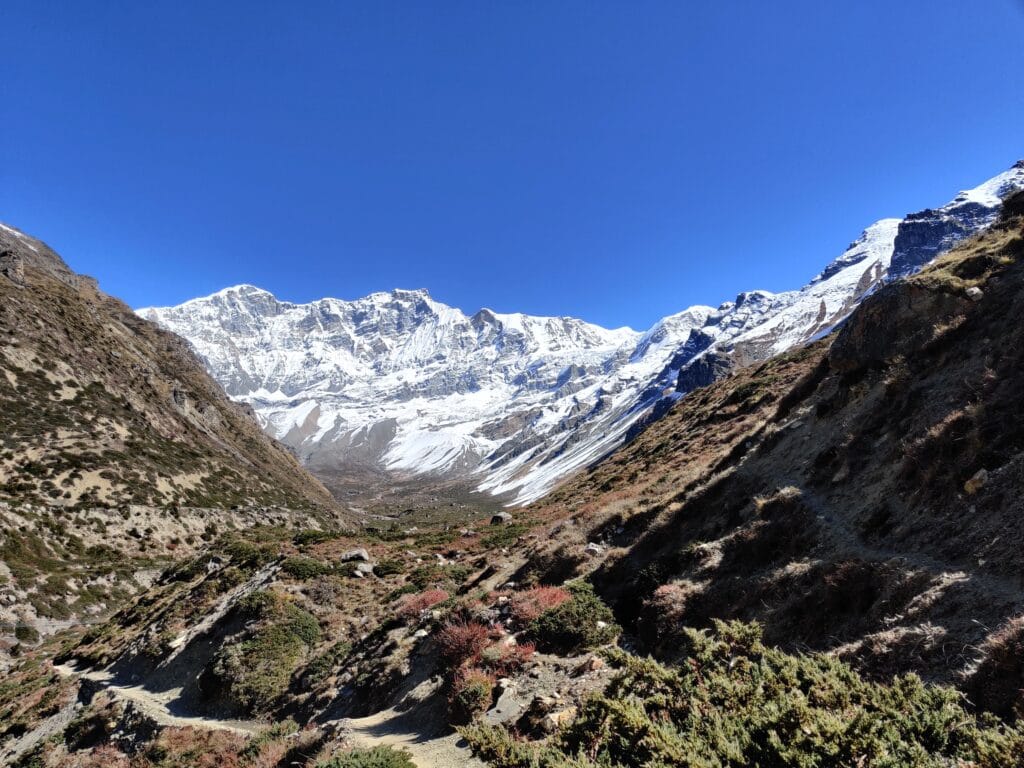
Chapter 9 – Remote Mountains
When at an altitude above 4000m, it’s important to drink more water than usual. And by that, we’re talking 4-5 litres a day! It means you’re very well hydrated, but you need the toilet fairly often. That comes to the second disadvantage of more primitive regions. The hygiene and toilet facilities are limited. No more flush toilets. That luxury was replaced by squatting shit holes which smelt like a whole village had been laid to waste in the same pit. The smell is revolting and makes you question how badly you need the bathroom. It was these simple differences which grew my gratitude for the essentials we take for granted in our homes.
Speaking of, there would be no more internet in this remote valley with barely any shrubs and steep rocky scree instead. It felt like we were on an expedition, simply us against the mountain. After a social time in Manang, I didn’t recognise any familiar faces in the teahouse. Instead, I took some time to read and journal whilst trying not to worry about the headache. I had drunk more than enough water, been taking our time on the hikes, yet was this the first sign of Altitude Sickness?
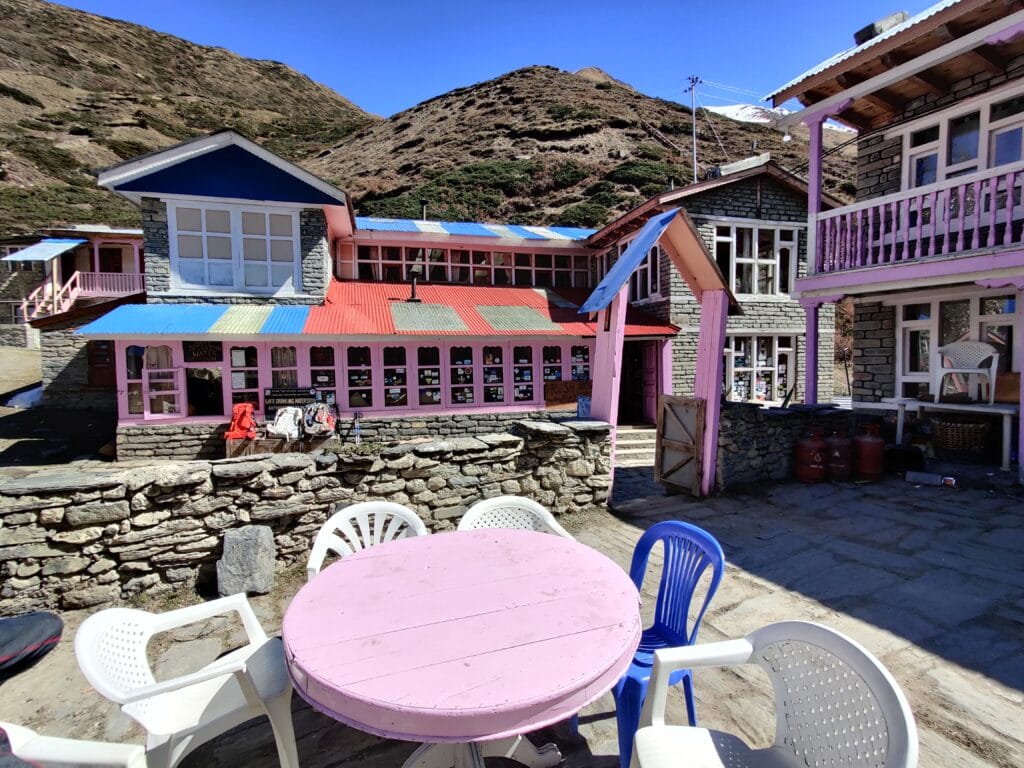
Afterword
Stay tuned for Part 5 of the Annapurna Himalaya Trek, which continues the journey after Manang, Annapurna Circuit, and from Yak Kharka to Thorong La Pass and onto Muktinath! Please comment if you are enjoying the series, and keep an eye out for tips and hidden links between the posts.